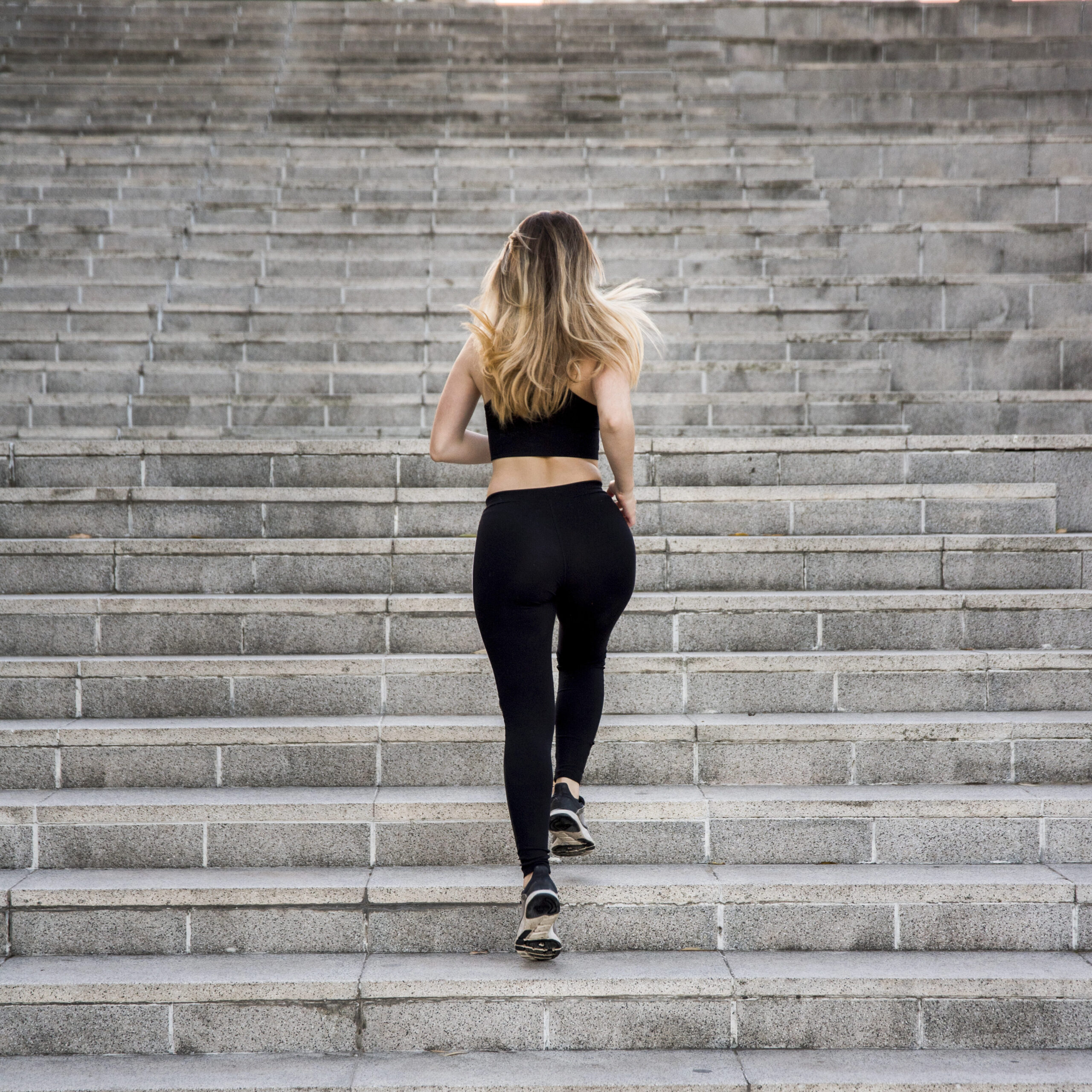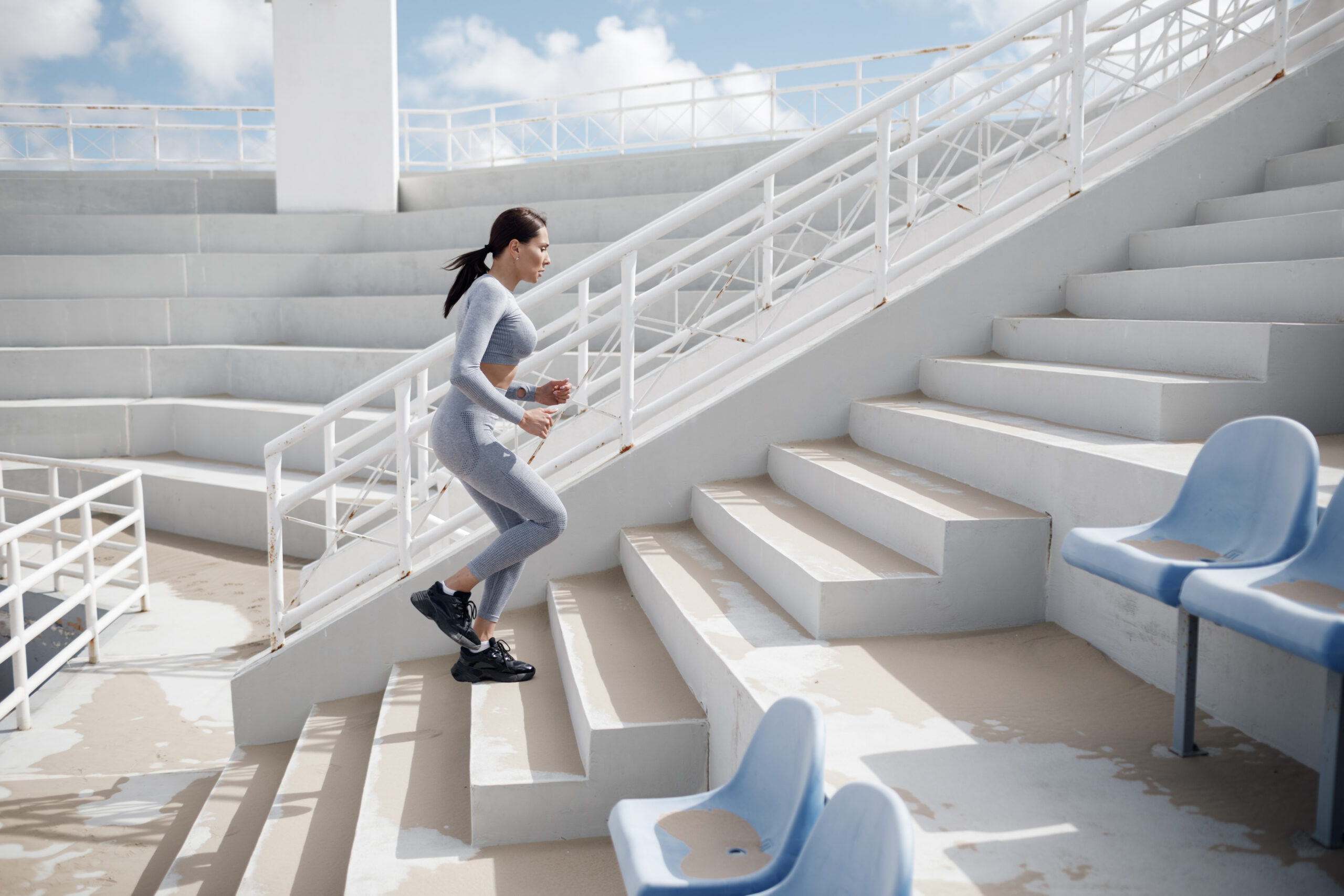Introduction
Climbing stairs is more than just a physical exercise; it’s a simple yet effective way to improve your fitness and overall well-being. In this comprehensive guide, we will explore the many aspects of climbing stairs, from the physical benefits to the psychological impact, and provide you with a detailed roadmap to make the most of this underrated activity.
Table of Contents
Climbing Stairs Physical Activity: Helpful Guide to 11 Health Benefits
The Simplicity of Stair Climbing
Stair climbing is perhaps one of the simplest yet most effective forms of exercise available to us. It requires nothing more than a staircase, and it can be done by people of all ages and fitness levels. Despite its simplicity, stair climbing offers a multitude of physical and mental benefits, making it an activity that should not be overlooked.
Why Choose Stairs Over Other Exercises
With numerous exercise options available, you might wonder why you should choose stair climbing. One of the key reasons is its accessibility. Stairs can be found in almost every building, making it easy to incorporate this activity into your daily routine. In addition to accessibility, stair climbing offers a unique set of advantages that set it apart from other exercises.
The Physical Benefits
A Full-Body Workout
Stair climbing engages multiple muscle groups, offering a full-body workout. Your legs, including the quadriceps, hamstrings, and calves, work to lift your body weight with each step. Additionally, your core muscles are engaged to help maintain balance and posture. Over time, this leads to improved muscle tone and overall strength.
Improving Cardiovascular Health
Climbing stairs is a fantastic way to improve your cardiovascular health. It increases your heart rate and helps boost circulation, leading to enhanced endurance and reduced risk of heart disease. This cardiovascular workout is particularly beneficial for those who find traditional cardio exercises monotonous.
Building Leg Strength
As you continue to climb stairs, you’ll notice a significant improvement in your leg strength. The repetitive motion of lifting your body weight against gravity is an effective way to build and tone leg muscles. Whether you’re aiming for stronger quads or more defined calves, stair climbing can help you achieve your goals.
Toning Muscles
Toning your muscles is an essential part of any fitness regimen. Stair climbing not only strengthens your muscles but also helps to tone them. The constant contraction and extension of your leg muscles during each step contribute to a leaner, more sculpted appearance.
Enhancing Balance and Coordination
Maintaining balance while climbing stairs is crucial. This activity enhances your sense of balance and coordination as you navigate each step. It’s particularly beneficial for older adults, as it can help reduce the risk of falls and injuries.

Climbing Stairs Physical Activity: Helpful Guide to 11 Health Benefits
The Psychological Impact
Stress Reduction
Stair climbing is not just about physical fitness; it also has a positive impact on your mental well-being. The rhythmic motion of climbing, combined with the release of endorphins, can reduce stress and anxiety. It offers a tranquil getaway from the daily stresses of life.
Boosting Mental Alertness
Regular stair climbing can lead to improved mental alertness and cognitive function. The increased blood flow to the brain and the release of neurotransmitters can enhance your ability to concentrate and stay focused.
Enhancing Mood
Exercise, including stair climbing, triggers the release of neurotransmitters like serotonin and dopamine, which are known as “feel-good” chemicals. This can elevate your mood and reduce feelings of depression and anxiety.
Building Confidence
As you progress in your stair climbing journey, you’ll experience a sense of accomplishment and increased self-confidence. Setting and achieving goals, even in a simple activity like this, can have a significant impact on your self-esteem.
Getting Started with Stair Climbing
Choosing the Right Stairs
To begin your stair climbing journey, you’ll need access to a staircase. You can choose between outdoor and indoor stairs, depending on your preferences and the weather. Outdoor stairs often offer a more scenic experience, while indoor stairs provide a controlled environment.
Proper Footwear
Wearing the right footwear is essential for a safe and comfortable stair climbing experience. Opt for athletic shoes with good arch support and cushioning. This will help reduce the risk of foot and leg discomfort.
Warm-Up and Stretching
Before you start climbing, it’s crucial to warm up your muscles and perform some stretching exercises. This will prepare your body for the activity and reduce the risk of injury. Pay attention to stretching your leg muscles, back, and core muscles.
Safety Precautions
While stair climbing is a safe activity for most people, it’s essential to take certain safety precautions. Always be aware of your surroundings, and if you have any underlying health conditions or concerns, consult with a healthcare professional before starting a new exercise routine.

Climbing Stairs Physical Activity: Helpful Guide to 11 Health Benefits
Stair Climbing Techniques
The Basic Climb
The basic stair climbing technique involves ascending one step at a time. Start with a slow and steady pace, ensuring that you maintain proper posture. Use the handrail for support if needed.
Interval Training
Interval training involves alternating between periods of intense stair climbing and periods of rest or slower climbing. This technique can help improve cardiovascular fitness and endurance.
Side-Step Technique
The side-step technique is an excellent way to target different muscle groups. Instead of ascending stairs frontwards, you step sideways with each climb. This engages your inner and outer thigh muscles.
Skipping Steps
Skipping steps is a more advanced technique that involves taking larger strides and skipping every other step. This increases the intensity of your workout and engages different muscle groups.
Setting Goals and Tracking Progress
Short-Term and Long-Term Goals
Setting clear and achievable goals is crucial for staying motivated. Whether you aim to climb a certain number of steps or increase your speed, having goals will give your stair climbing routine purpose.
Tracking Your Climbing Progress
Keep a record of your stair climbing sessions, including the number of steps climbed, the time taken, and any improvements you notice. This tracking will help you see your progress and make necessary adjustments to your routine.
Overcoming Plateaus
It’s common to reach a plateau in your stair climbing progress. When this happens, don’t get discouraged. Instead, try varying your routine, increasing the intensity, or seeking advice from experienced climbers to break through the plateau.

Climbing Stairs Physical Activity: Helpful Guide to 11 Health Benefits
Incorporating Stair Climbing Into Your Routine
Indoor vs. Outdoor Stair Climbing
Both indoor and outdoor stair climbing have their advantages. Indoor staircases are convenient, but outdoor stairs provide a change of scenery and fresh air. Consider incorporating both into your routine for variety.
Combining Stair Climbing with Other Exercises
Stair climbing can be a valuable addition to your existing exercise routine. It complements activities like strength training and yoga, offering a unique form of cardio and muscle engagement.
Creating a Stair Climbing Schedule
To experience the full benefits of stair climbing, establish a regular schedule. Consistency is key to achieving your fitness goals. Decide how many days a week you can commit to climbing and stick to your plan.
The Role of Nutrition
Remember that nutrition plays a significant role in your fitness journey. Maintain a balanced diet to provide your body with the necessary nutrients for energy and recovery.
Common Mistakes to Avoid
Overexertion
Pushing yourself too hard too quickly can lead to overexertion and injuries. Start at a manageable pace and gradually increase the intensity of your stair climbing sessions.
Incorrect Posture
Maintaining proper posture is essential to prevent strain on your back and knees. Maintain an upright posture with your back aligned, shoulders at ease, and activate your core muscles.
Neglecting Rest and Recovery
Taking breaks and allowing your body to recover is just as crucial as the exercise you’re doing. Allow your muscles to heal and repair between sessions to avoid burnout and injuries.
Ignoring Pain or Discomfort
Pain or discomfort during stair climbing can be a sign of an underlying issue. If you experience persistent pain, consult a healthcare professional to address the problem.
Safety Precautions
Proper Lighting
If you’re climbing stairs outdoors or in a dimly lit area, ensure you have adequate lighting to avoid accidents.
Stair Condition
Inspect the condition of the stairs regularly, especially if you’re climbing outdoor stairs. Look for any loose or damaged steps that could pose a hazard.
Carrying Water and Essentials
Always carry a water bottle and any essential items like a phone or identification. This is particularly important when climbing in remote areas.
Emergency Preparedness
Be prepared for unexpected situations. Let someone know your climbing plans and schedule, and carry a basic first-aid kit in case of minor injuries.

Climbing Stairs Physical Activity: Helpful Guide to 11 Health Benefits
Stair Climbing for Weight Loss
Calorie Burning Potential
Stair climbing is an excellent activity for those looking to shed excess weight. It can burn a significant number of calories, making it an effective addition to your weight loss regimen.
Combining Stair Climbing with a Balanced Diet
While stair climbing can contribute to weight loss, it’s essential to combine it with a balanced diet. A healthy eating plan will complement your efforts and help you achieve your weight loss goals.
Stair Climbing for Seniors
Benefits for Older Adults
Stair climbing can benefit older adults in various ways. It improves strength, balance, and mobility, reducing the risk of falls and injuries.
Safety Concerns
Seniors should take additional safety precautions, such as using handrails and considering a spotter, especially if they have mobility issues.
Modifications and Adaptations
For older adults with limited mobility, there are modified stair climbing exercises that can be done safely under supervision.
Stair Climbing for Children
Encouraging Physical Activity
Getting children involved in stair climbing is a great way to encourage physical activity from a young age. It sets a foundation for a healthy lifestyle.
Supervision and Safety Measures
Children should always be supervised while climbing stairs. Ensure they use proper technique and adhere to safety guidelines.

Climbing Stairs Physical Activity: Helpful Guide to 11 Health Benefits
Stair Climbing and the Environment
Reducing Carbon Footprint
Choosing stairs over elevators or escalators is an environmentally friendly choice. It reduces energy consumption and your carbon footprint.
Sustainable Stair Climbing Initiatives
Some organizations promote sustainable stair climbing initiatives, which combine fitness with environmental awareness. Participating in these programs can make your stair climbing even more impactful.
Stair Climbing Events and Competitions
Charity Stair Climbs
Many charity organizations host stair climbing events to raise funds for a cause. Participating in these events allows you to contribute to a charitable cause while staying active.
Competitive Stair Climbing
For those looking to take stair climbing to the next level, competitive stair climbing events are a great option. These races challenge participants to climb flights of stairs as quickly as possible.
Inspiring Success Stories
Personal Transformations
Hear inspiring stories of individuals who have transformed their lives through stair climbing. These stories demonstrate the incredible impact this simple activity can have.
Achieving Athletic Goals
Stair climbing has become a pursuit for many athletes looking to push their physical limits and achieve new athletic milestones.
Overcoming Health Challenges
Individuals facing health challenges have used stair climbing as a means of rehabilitation and improvement. These stories show that stair climbing is accessible to almost everyone.

Climbing Stairs Physical Activity: Helpful Guide to 11 Health Benefits
The Future of Stair Climbing
Technological Innovations
The future of stair climbing includes innovative technologies that track your progress, create interactive challenges, and provide virtual coaching.
Architectural Considerations
Architects are increasingly designing buildings with staircases that are not only functional but also aesthetically pleasing, encouraging more people to use them for exercise.
Global Trends
Stair climbing is becoming a global trend with initiatives promoting this activity in various countries. The future holds the promise of even greater accessibility and awareness.
Stair Climbing Myths Debunked
Stair Climbing vs. Elevators
Debunking the myth that elevators are more convenient than stairs and exploring the benefits of choosing stairs.
Stair Climbing and Joint Health
Addressing concerns about the impact of stair climbing on joint health and discussing how to mitigate potential issues.
Stair Climbing and Muscle Bulk
Clarifying misconceptions about muscle bulk and how stair climbing can contribute to muscle definition without excessive bulk.
Stair Climbing as a Form of Meditation
Mindful Stair Climbing
Discover how stair climbing can be a form of meditation, helping you find peace and presence in the present moment.
Connecting with Your Body
Using stair climbing as an opportunity to connect with your body and explore your physical capabilities in a mindful way.
The Social Aspect of Stair Climbing
Building Communities
Stair climbing can bring people together, creating communities of like-minded individuals who share a passion for this activity.
Group Stair Climbing Activities
Exploring the benefits of group stair climbing activities, from motivation to camaraderie.

Conclusion:
Climbing Stairs Physical Activity: Helpful Guide to 11 Health Benefits
Climbing stairs is an exercise that is within everyone’s reach. It offers a multitude of benefits, from physical fitness to mental well-being. By embracing the stairs, you’re taking a step towards a healthier and happier you. So, lace up your shoes, find a staircase, and begin your stair climbing journey today. Both your body and mind will show their appreciation for your efforts.
Frequently Asked Questions (FAQs):
Climbing Stairs Physical Activity: Helpful Guide to 11 Health Benefits
- Is Climbing Stairs suitable for beginners?
- Yes, stair climbing is a great exercise for beginners. You can start at a slow pace and gradually increase the intensity as you become more comfortable with the activity.
- Yes, stair climbing is a great exercise for beginners. You can start at a slow pace and gradually increase the intensity as you become more comfortable with the activity.
- Do I need any special equipment for Climbing Stairs?
- No, you don’t need any special equipment. A staircase is all you need. However, it’s advisable to wear comfortable athletic shoes with good support.
- No, you don’t need any special equipment. A staircase is all you need. However, it’s advisable to wear comfortable athletic shoes with good support.
- How can I prevent muscle soreness after Climbing Stairs?
- To prevent muscle soreness, make sure to warm up before you start and stretch after your climb. Hydration and a balanced diet can also help with muscle recovery.
- To prevent muscle soreness, make sure to warm up before you start and stretch after your climb. Hydration and a balanced diet can also help with muscle recovery.
- Is Climbing Stairs safe for seniors?
- Stair climbing can be safe for seniors, but it’s essential to take precautions, such as using handrails and considering a spotter, especially if they have mobility issues.
- Stair climbing can be safe for seniors, but it’s essential to take precautions, such as using handrails and considering a spotter, especially if they have mobility issues.
- Can Climbing Stairs help with weight loss?
- Yes, stair climbing can be an effective part of a weight loss regimen. It burns calories and helps with overall fitness, which can contribute to weight loss when combined with a balanced diet.
- Yes, stair climbing can be an effective part of a weight loss regimen. It burns calories and helps with overall fitness, which can contribute to weight loss when combined with a balanced diet.
- How frequently should I use the stairs to notice positive changes in my fitness?
- The frequency of stair climbing depends on your fitness goals. For general fitness, 2-3 times a week is a good start. If you aim for specific goals, consult a fitness professional.
- The frequency of stair climbing depends on your fitness goals. For general fitness, 2-3 times a week is a good start. If you aim for specific goals, consult a fitness professional.
- Can children participate in Climbing Stairs?
- Yes, children can participate, but they should be supervised and taught proper technique and safety measures.
- Yes, children can participate, but they should be supervised and taught proper technique and safety measures.
- Is Climbing Stairs environmentally friendly?
- Yes, choosing stairs over elevators or escalators reduces energy consumption and is an environmentally friendly choice.
- Yes, choosing stairs over elevators or escalators reduces energy consumption and is an environmentally friendly choice.
- What are the benefits of group Climbing Stairs activities?
- Group stair climbing activities offer motivation, camaraderie, and a sense of community. They can make the exercise more enjoyable and engaging.
- Group stair climbing activities offer motivation, camaraderie, and a sense of community. They can make the exercise more enjoyable and engaging.
- How can I overcome a plateau in my Climbing Stairs progress?
- If you reach a plateau, consider varying your routine, increasing the intensity, or seeking advice from experienced climbers to break through the plateau.
- If you reach a plateau, consider varying your routine, increasing the intensity, or seeking advice from experienced climbers to break through the plateau.
- Is Climbing Stairs a good exercise for building muscle?
- While it’s not primarily a muscle-building exercise, stair climbing can contribute to muscle tone and definition without excessive bulk.
- While it’s not primarily a muscle-building exercise, stair climbing can contribute to muscle tone and definition without excessive bulk.
- Can I combine Climbing Stairs with other exercises?
- Yes, stair climbing can be a valuable addition to your existing exercise routine. It pairs well with strength training, yoga, and various other workout routines.
- Yes, stair climbing can be a valuable addition to your existing exercise routine. It pairs well with strength training, yoga, and various other workout routines.
- What should I do if I experience pain or discomfort during Climbing Stairs?
- If you experience persistent pain or discomfort, it’s essential to consult a healthcare professional to address the issue and avoid further injury.
- If you experience persistent pain or discomfort, it’s essential to consult a healthcare professional to address the issue and avoid further injury.
- Are there any online resources for tracking Climbing Stairs progress?
- Yes, there are various apps and websites that can help you track your stair climbing sessions, including the number of steps climbed and the time taken.
- Yes, there are various apps and websites that can help you track your stair climbing sessions, including the number of steps climbed and the time taken.
- Are there any Climbing Stairs events I can participate in?
- Many charity organizations host stair climbing events to raise funds for a cause. You can also find competitive stair climbing races in some areas.
- Many charity organizations host stair climbing events to raise funds for a cause. You can also find competitive stair climbing races in some areas.
- Can Climbing Stairs be used as a meditation technique?
- Yes, stair climbing can be a form of meditation, providing a mindful escape and a chance to connect with your body and mind.
- Yes, stair climbing can be a form of meditation, providing a mindful escape and a chance to connect with your body and mind.
- How can I join Climbing Stairs communities?
- Look for local or online groups and communities that focus on stair climbing. Social media and fitness apps can be great places to connect with like-minded individuals.
- Look for local or online groups and communities that focus on stair climbing. Social media and fitness apps can be great places to connect with like-minded individuals.
- Is Climbing Stairs suitable for people with joint issues?
- Stair climbing can be adapted for individuals with joint issues, but it’s important to consult a healthcare professional and adjust the intensity as needed.
- Stair climbing can be adapted for individuals with joint issues, but it’s important to consult a healthcare professional and adjust the intensity as needed.
- What are the future trends in Climbing Stairs?
- The future of stair climbing includes innovative technologies, architectural considerations, and global trends that promote the activity and make it even more accessible.
- The future of stair climbing includes innovative technologies, architectural considerations, and global trends that promote the activity and make it even more accessible.
- How can I get started with Climbing Stairs if I’m a complete beginner?
- To get started, find a suitable staircase, wear comfortable shoes, and begin with a slow and steady pace. Don’t forget to warm up and stretch before and after your climb.
Climbing Stairs Physical Activity: Helpful Guide to 11 Health Benefits
Remember, stair climbing is a versatile and accessible exercise that offers a wide range of benefits. If you have specific questions or concerns, consult with a fitness professional or a healthcare provider for personalized guidance.

2 thoughts on “Climbing Stairs Physical Activity: Helpful Guide to 11 Health Benefits”